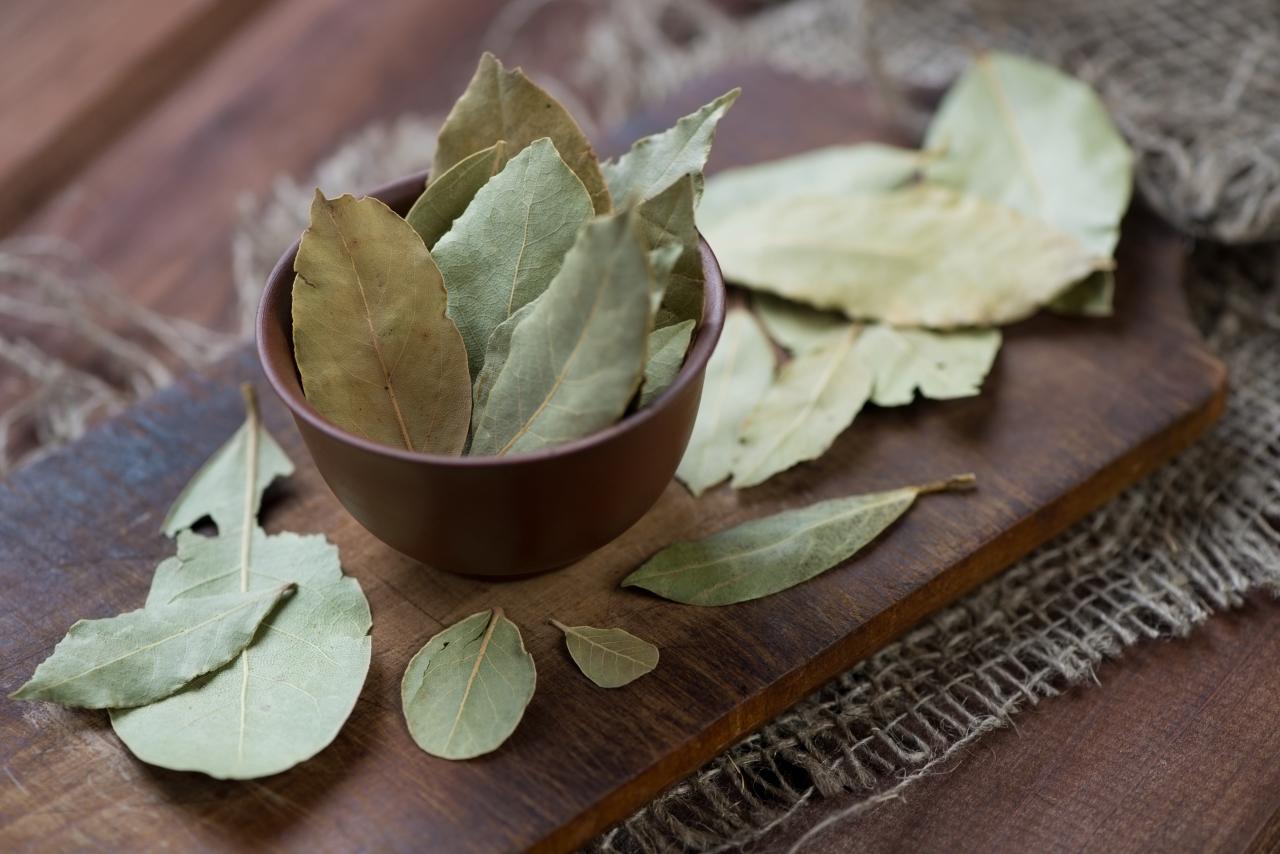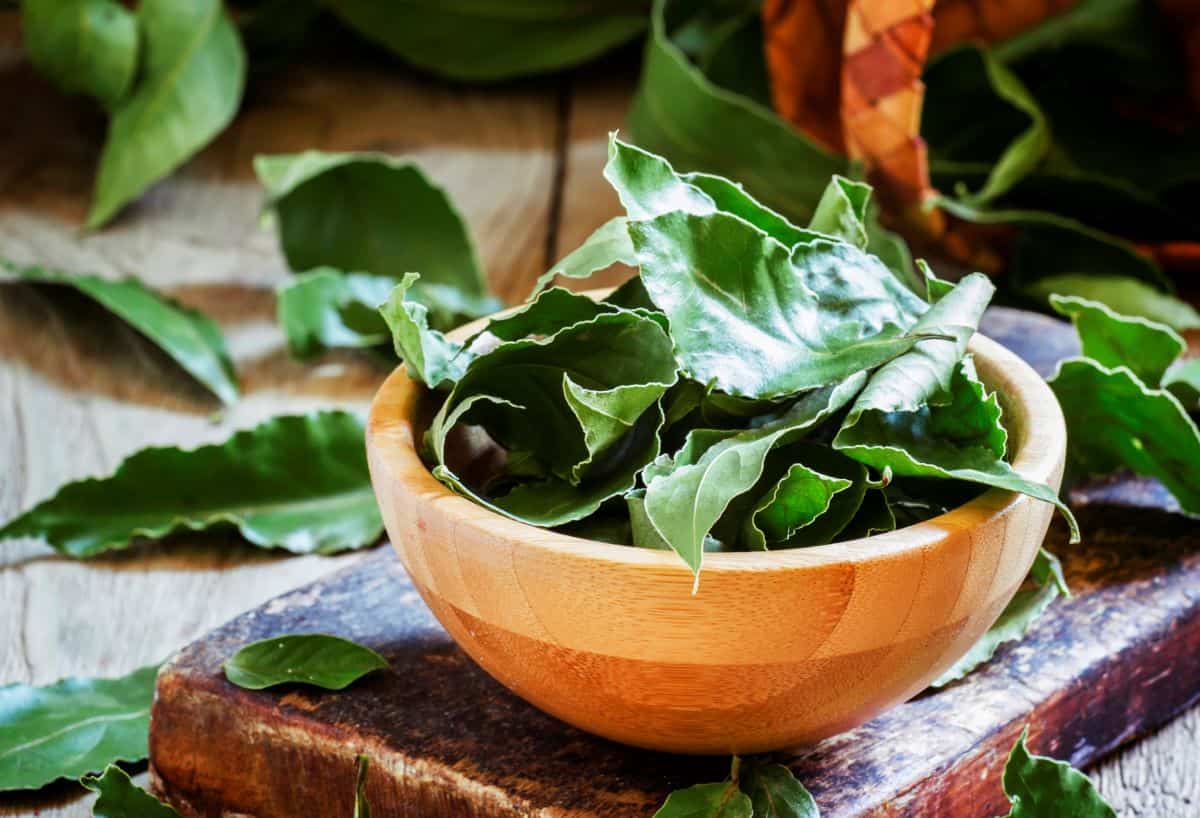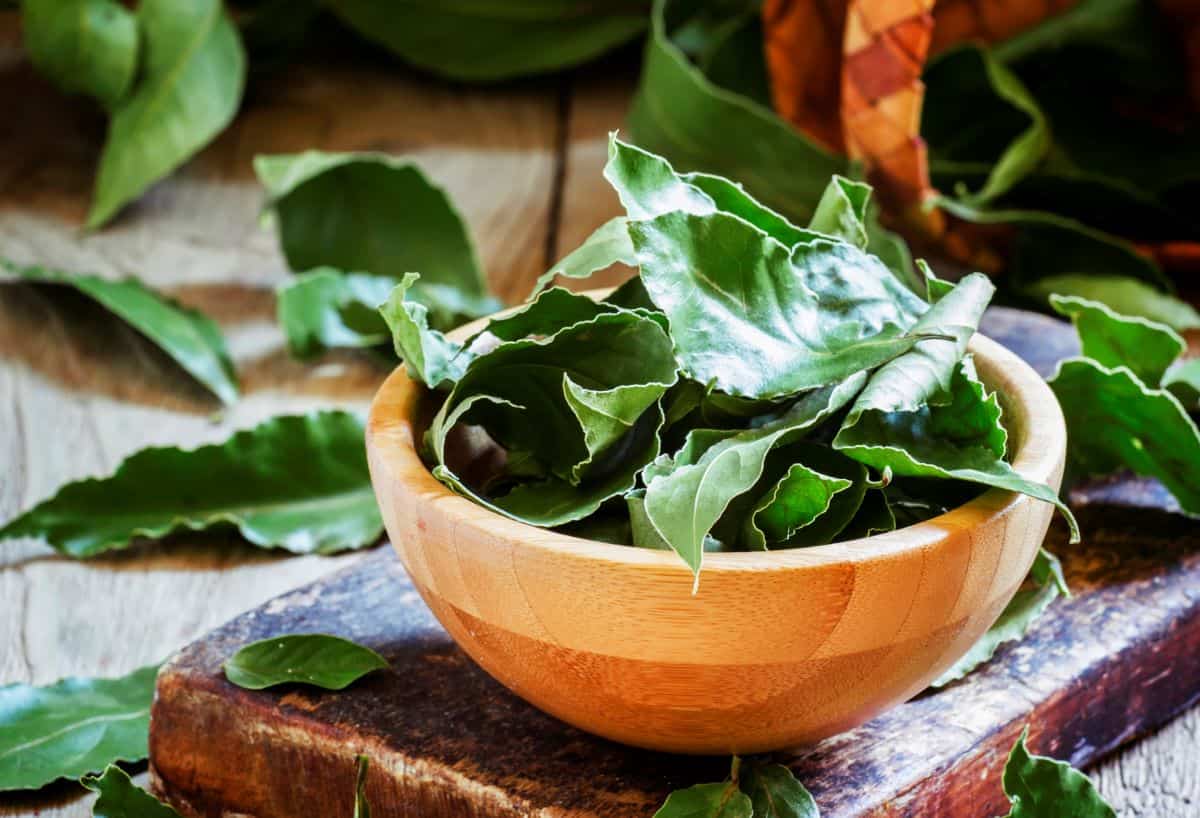The Ultimate Bay Leaf Substitutes for Delicious Home Cooking: Have you ever found yourself staring at a recipe, only to realize you’re missing a crucial ingredient – bay leaves? Don’t fret! This culinary conundrum is easily solved with a world of flavorful alternatives.
Bay leaves, with their earthy and slightly bitter notes, lend depth to stews, soups, and sauces. But what if you don’t have them on hand? This guide will equip you with the knowledge to confidently substitute bay leaves, ensuring your dishes remain delicious and aromatic.
From the classic rosemary to the lesser-known lovage, we’ll explore a spectrum of substitutes that offer diverse flavor profiles. We’ll delve into their unique characteristics, providing insights on how to use them effectively in your cooking. Whether you’re a seasoned chef or a home cook, this comprehensive guide will empower you to experiment with new flavors and elevate your culinary creations.
Understanding Bay Leaf’s Role: The Ultimate Bay Leaf Substitutes For Delicious Home Cooking

Bay leaves, with their distinctive aroma and flavor, are a culinary staple in many cuisines around the world. They contribute a unique depth and complexity to dishes, adding an earthy, slightly bitter, and slightly camphoraceous note.
While exploring the world of culinary substitutions, you might find yourself seeking a bit of luck along the way. Perhaps a touch of good fortune in finding the perfect replacement for a missing bay leaf. If so, consider delving into the world of four-leaf clovers, where you can learn the secrets of finding and cultivating these lucky charms.
How to Find and Cultivate Four Leaf Clovers for Maximum Personal Gain can help you unlock the potential of these rare botanical treasures. Returning to the realm of cooking, remember that bay leaf substitutes can elevate your dishes with subtle, aromatic flavors, offering a world of possibilities for your next culinary adventure.
Flavor Profile of Bay Leaves
Bay leaves possess a complex flavor profile that combines earthy, slightly bitter, and slightly camphoraceous notes. This unique flavor is attributed to the presence of volatile oils, including eucalyptol, cineole, and linalool. These compounds contribute to the characteristic aroma and flavor of bay leaves, which can range from subtly herbaceous to more pronounced depending on the variety and freshness of the leaves.
Bay Leaves’ Enhancement of Dishes
Bay leaves are renowned for their ability to enhance the flavor of a wide range of dishes. Their versatility allows them to be used in both savory and sweet preparations, adding depth and complexity to the overall taste profile.
Common Uses of Bay Leaves in Different Cuisines
Bay leaves are widely used in various cuisines around the world, each with its own unique culinary traditions and applications.
- Mediterranean Cuisine:Bay leaves are an essential ingredient in many Mediterranean dishes, including stews, soups, and sauces. They are often used in combination with other herbs and spices, such as garlic, onion, and oregano, to create complex and aromatic flavors.
- French Cuisine:In French cuisine, bay leaves are commonly used in sauces, soups, and stews. They are often added to classic dishes like bouillabaisse, a Provençal fish stew, and béarnaise sauce.
- Italian Cuisine:Bay leaves are a staple in Italian cooking, particularly in dishes like tomato sauces, meat braises, and soups. They are often used in combination with other herbs and spices, such as rosemary, thyme, and sage.
- Asian Cuisine:Bay leaves are used in some Asian cuisines, such as Chinese and Vietnamese cooking. In Chinese cuisine, they are often used in stir-fries, soups, and braised dishes. In Vietnamese cuisine, bay leaves are used in pho, a popular noodle soup.
Best Bay Leaf Substitutes
Bay leaves, with their distinctive aroma and flavor, enhance the taste of countless dishes. However, there are times when a bay leaf might not be readily available or you might prefer to explore alternative flavor profiles. Fortunately, a variety of herbs and spices can step in to deliver similar or complementary notes to your culinary creations.
Bay Leaf Substitutes: A Flavorful Exploration
The best substitute for a bay leaf depends on the specific dish and the desired flavor profile. Here’s a breakdown of some popular options, categorized by their flavor intensity and typical applications:
Substitute |
Flavor Profile |
Best Applications |
|---|---|---|
Thyme |
Earthy, slightly pungent, with hints of lemon and camphor |
Stews, soups, roasted vegetables, chicken dishes |
Rosemary |
Woody, slightly bitter, with hints of pine and citrus |
Roasted meats, casseroles, marinades, bread |
Oregano |
Warm, slightly bitter, with notes of earth and mint |
Italian dishes, pizza, tomato sauces, marinades |
Marjoram |
Sweet, slightly peppery, with hints of citrus and mint |
Chicken, lamb, vegetables, salads |
Sage |
Earthy, slightly bitter, with notes of pine and camphor |
Stuffings, poultry, pasta dishes, sausages |
Dried Basil |
Sweet, slightly peppery, with hints of licorice and anise |
Tomato sauces, pasta dishes, soups, pesto |
Allspice Berries |
Warm, slightly spicy, with notes of nutmeg, cinnamon, and cloves |
Pickles, chutneys, marinades, baked goods |
Black Peppercorns |
Spicy, pungent, with hints of citrus and earth |
Stews, soups, sauces, marinades |
Using Substitutes Effectively
While bay leaf substitutes offer a similar flavor profile, understanding their nuances is crucial for achieving optimal results. Knowing how their intensity and cooking time differ from bay leaves will help you create delicious dishes that taste exactly as intended.
Understanding Flavor Intensity
The intensity of bay leaf substitutes can vary greatly. For instance, thyme and rosemary are stronger than marjoram, which is closer to bay leaf in intensity. This difference in strength is crucial to consider when substituting.
- Stronger substitutes:Thyme, rosemary, and sage, require a lighter hand. Use a smaller amount to avoid overpowering the dish.
- Milder substitutes:Marjoram, oregano, and parsley can be used in similar quantities to bay leaves.
Adjusting Cooking Time and Quantity
Bay leaves are typically simmered in dishes for an extended period, allowing their flavor to infuse gradually. However, substitutes may require adjustments in cooking time and quantity.
- Stronger substitutes:Use a shorter cooking time to prevent them from becoming bitter. For example, if a recipe calls for bay leaves simmered for 30 minutes, you might only need to simmer thyme or rosemary for 15 minutes.
- Milder substitutes:Adjust the cooking time based on the specific substitute and the desired flavor intensity. For example, if you’re using marjoram, you might need to simmer it for a slightly longer period than bay leaves to achieve a comparable flavor.
- Quantity:Generally, start with a smaller quantity of substitute than you would use bay leaves. You can always add more if needed.
Maximizing Flavor
To maximize the flavor of your substitutes, consider these tips:
- Toasting:Toasting spices like thyme, rosemary, and oregano before adding them to your dish can enhance their flavor. This process releases essential oils and adds depth to the aroma.
- Adding at the right time:Some substitutes, like fresh herbs, are best added towards the end of cooking to preserve their delicate flavor. Others, like dried herbs, can be added at the beginning for a more intense flavor.
- Blending:Combining several substitutes can create a flavor profile that closely resembles bay leaves. For example, a mixture of marjoram, thyme, and rosemary can provide a similar flavor to bay leaves in a stew.
Bay Leaf Substitute Recipes

Bay leaves are a staple in many cuisines, adding a unique earthy and slightly bitter flavor to dishes. However, there are times when you might not have bay leaves on hand or prefer a different flavor profile. Luckily, there are several excellent substitutes you can use to achieve similar results.
Classic French Onion Soup with Thyme
This recipe uses thyme as a substitute for bay leaves in a classic French onion soup. Thyme complements the sweetness of the caramelized onions and adds a subtle, herbaceous aroma.
Ingredients
- 2 tablespoons olive oil
- 3 large yellow onions, thinly sliced
- 1 teaspoon salt
- 1/2 teaspoon black pepper
- 1/2 teaspoon dried thyme
- 4 cups beef broth
- 1 cup dry red wine
- 1/2 cup grated Gruyère cheese
- 1/4 cup chopped fresh parsley
Instructions
- In a large pot or Dutch oven, heat the olive oil over medium heat. Add the onions and cook, stirring occasionally, until they are soft and caramelized, about 30 minutes.
- Season the onions with salt, pepper, and thyme. Pour in the beef broth and red wine. Bring to a boil, then reduce heat and simmer for 30 minutes.
- Ladle the soup into oven-safe bowls. Top each bowl with grated Gruyère cheese and broil until the cheese is melted and bubbly.
- Garnish with chopped fresh parsley and serve immediately.
Flavor Differences
While thyme won’t replicate the exact flavor of bay leaves, it adds a similar earthy and slightly bitter note to the soup. The thyme’s herbal flavor blends beautifully with the sweetness of the caramelized onions and the richness of the broth.
Exploring Beyond the Basics
While bay leaf substitutes are great for replicating its signature aroma, venturing beyond the familiar opens up a world of flavor possibilities. These alternatives offer unique profiles, adding depth and complexity to your dishes.
Unconventional Bay Leaf Substitutes, The Ultimate Bay Leaf Substitutes for Delicious Home Cooking
Beyond the typical rosemary, thyme, and sage, there are a number of lesser-known spices and herbs that can effectively substitute for bay leaves, offering distinct flavor profiles and exciting culinary possibilities.
While exploring the world of culinary substitutes, it’s also fascinating to delve into the realm of gardening. If you’re looking to add a touch of beauty and vibrant color to your garden, consider planting columbines, which boast delicate blooms and intricate foliage.
For optimal growth, learn about the best practices for nurturing these captivating plants, such as providing well-draining soil and adequate sunlight, as outlined in this comprehensive guide: How to Maximize the Growth of Your Columbine Plants. Just as you might substitute bay leaves for a similar flavor profile, exploring different gardening techniques can enhance your green thumb and create a thriving garden oasis.
- Dried Lemon Peel:A citrusy twist, ideal for Mediterranean dishes, seafood, and sauces. Its zesty aroma and subtle bitterness can complement a variety of flavors.
- Star Anise:A potent spice with licorice-like notes, adding depth to Asian-inspired dishes, stews, and braises. Its sweet and savory profile complements meat, poultry, and vegetables.
- Dried Ginger:A warm and pungent spice, perfect for Asian-inspired dishes, curries, and soups. Its spicy heat and earthy notes can add complexity to savory dishes.
- Dried Orange Peel:A citrusy and sweet alternative, ideal for fruit-based desserts, sauces, and marinades. Its aromatic profile can enhance the flavor of poultry, pork, and fish.
- Allspice Berries:A complex spice with notes of cinnamon, nutmeg, and cloves, suitable for hearty stews, braises, and baked goods. Its warm and savory profile complements meat and vegetables.
Using Unconventional Substitutes in Different Culinary Contexts
These unconventional substitutes can be incorporated into various dishes, adding unique flavor profiles and enhancing the overall taste experience.
- Dried Lemon Peel in Mediterranean Dishes:Incorporate dried lemon peel into Greek lemon potatoes, adding a citrusy kick and complementing the olive oil and garlic.
- Star Anise in Asian-Inspired Dishes:Use star anise in Vietnamese pho, adding a licorice-like depth to the broth and enhancing the overall flavor profile.
- Dried Ginger in Curries:Add dried ginger to Thai green curry, adding a spicy warmth and complementing the coconut milk and chili peppers.
- Dried Orange Peel in Fruit-Based Desserts:Incorporate dried orange peel into orange cake, adding a citrusy sweetness and enhancing the overall flavor profile.
- Allspice Berries in Hearty Stews:Use allspice berries in beef stew, adding a warm and savory depth to the dish and complementing the meat and vegetables.
Closure
So, the next time you find yourself without bay leaves, don’t despair! Embrace the opportunity to explore the world of substitutes. Each alternative offers a unique flavor profile that can add depth and complexity to your dishes. Remember to adjust cooking times and quantities accordingly, and let your culinary creativity soar.
With this guide, you’ll be equipped to confidently substitute bay leaves and create truly delicious meals, all while expanding your culinary horizons.
Essential Questionnaire
What are bay leaves typically used for?
Bay leaves are commonly used in savory dishes like soups, stews, sauces, and braises to add a distinct earthy and slightly bitter flavor. They are often removed before serving.
Are bay leaves essential for all dishes?
While bay leaves add a characteristic flavor, they are not essential for all dishes. Some recipes might call for them for tradition or specific flavor profiles, but you can often omit them without drastically altering the taste.
Can I use dried bay leaves instead of fresh?
Yes, you can use dried bay leaves as a substitute for fresh ones. However, they have a more concentrated flavor, so you’ll need to use less. Generally, one dried bay leaf is equivalent to about three fresh ones.
How long should I cook bay leaf substitutes?
Cooking times vary depending on the substitute. It’s best to consult a recipe or use your judgment based on the intensity of the substitute’s flavor. Some substitutes, like rosemary, may need shorter cooking times to avoid overpowering the dish.
